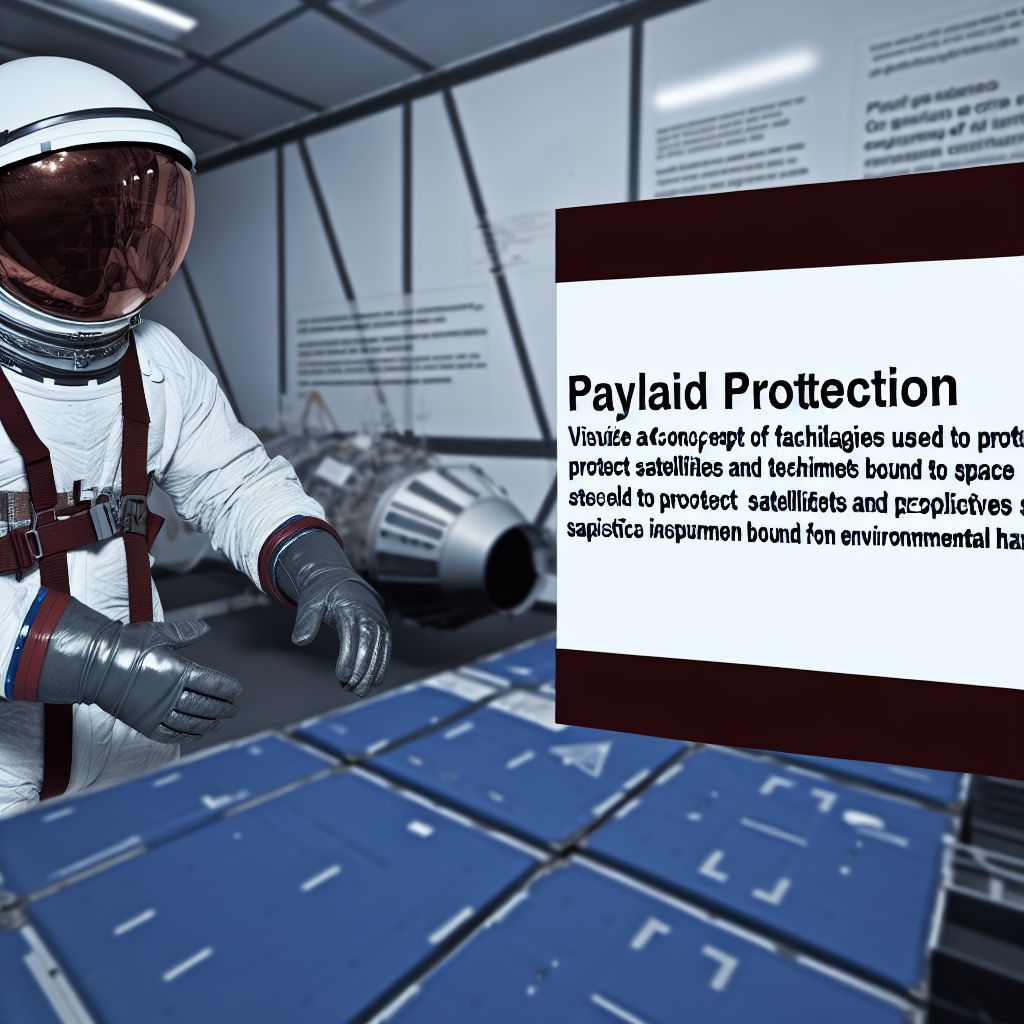Deutsch: Nutzlastschutz / Español: Protección de la carga útil / Português: Proteção da carga útil / Français: Protection de la charge utile / Italiano: Protezione del carico utile
Payload Protection in the Space industry context refers to the measures and technologies employed to safeguard satellites, scientific instruments, and any other cargo being sent into space against the myriad of environmental hazards encountered during Launch, in Orbit, and, for some missions, upon re-entry. This includes protection from extreme Temperature fluctuations, Radiation, micrometeoroids, and the mechanical stresses of launch such as vibration and acoustic shock. Ensuring the integrity and functionality of the payload is paramount for the success of space missions, given the significant investment in Development, launch, and operational phases.
Description

The space environment presents a unique set of challenges that can impair or damage payloads. Thermal extremes can cause materials to expand or contract, potentially damaging sensitive components. Cosmic radiation and solar flares can disrupt or degrade Electronic systems. Micrometeoroids traveling at high velocities can puncture or shatter components. Additionally, the launch process itself subjects payloads to intense vibrations and forces. Payload protection strategies must address these risks through robust design, protective materials, and sometimes active control systems to maintain operational environments for the payload.
Application Areas
Payload protection is Critical across a broad range of applications within the space industry, including:
- Satellite Communications: Ensuring continuous operation of communication satellites which provide vital Data transfer and broadcasting services.
- Earth Observation: Protecting instruments that Monitor Climate change, weather patterns, and other terrestrial phenomena from the Harsh conditions of space.
- Scientific Research: Safeguarding delicate scientific instruments used in experiments conducted in space or on other Celestial bodies.
- Human Spaceflight: Protecting life Support systems, crew habitats, and other equipment critical to Astronaut safety and mission success.
Well-Known Examples
- James Webb Space Telescope (JWST) employs a large sunshield to protect its sensitive instruments from solar radiation, maintaining the necessary cold conditions for its infrared sensors.
- Satellite constellations like SpaceX's Starlink are designed with robust casings and shields to protect against micrometeoroids and space debris.
- The Mars Rovers, equipped with thermal control systems to manage the temperature extremes of the Martian day-night cycle and protect onboard instruments.
Treatment and Risks
Effective payload protection requires addressing several key considerations:
- Material Selection: Using materials that can withstand the space environment's thermal, radiation, and mechanical stresses.
- Design and Testing: Incorporating features like shock absorbers and thermal insulation in the design phase, followed by rigorous testing to simulate launch and space conditions.
- Redundancy and Shielding: Implementing redundant systems for critical operations and using shielding to protect against radiation and physical impacts.
Similar Terms or Synonyms
- Spacecraft payload safety
- Space mission payload assurance
- Satellite protection mechanisms
Summary
Payload protection in the space industry involves a comprehensive set of strategies and technologies designed to ensure the safety and functionality of cargo sent into space. This encompasses protection from mechanical, thermal, and radiation hazards from the launch phase through to the operational life of the payload in orbit or beyond. Given the High Costs and strategic importance of space payloads, their protection is a critical component of mission planning and execution.
--
Related Articles to the term 'Payload Protection' | |
| 'Environmental Resistance' | ■■■■■■■■ |
| Environmental Resistance: Environmental resistance in the Space industry refers to the capacity of spacecraft, . . . Read More | |
| 'Shielding' | ■■■■■■■■ |
| Shielding in the space industry refers to the protective measures and materials used to safeguard spacecraft, . . . Read More | |
| 'Vibration Isolation' | ■■■■■■■ |
| Vibration Isolation in the Space industry refers to the techniques and technologies used to reduce or . . . Read More | |
| 'Payload Integration' | ■■■■■■■ |
| Payload Integration in the Space industry context refers to the process of preparing, assembling, testing, . . . Read More | |
| 'Launch Vehicle Engineering' | ■■■■■■■ |
| Launch Vehicle Engineering refers to the Design, development, and optimization of rockets or vehicles . . . Read More | |
| 'Mechanical Stress' | ■■■■■■■ |
| Mechanical Stress in the Space industry refers to the internal forces that materials and structures Experience . . . Read More | |
| 'COTS' | ■■■■■■ |
| Commercial Orbital Transportation Services (COTS) is a NASA program that was designed to encourage the . . . Read More | |
| 'Ejection' | ■■■■■■ |
| Ejection in the Space industry context refers to the process or action of expelling or releasing a spacecraft, . . . Read More | |
| 'Space launch operations' | ■■■■■■ |
| Space launch operations refer to the series of activities, procedures, and Logistics involved in preparing . . . Read More | |
| 'Firefly' | ■■■■■■ |
| Firefly in the Space industry refers to Firefly Aerospace, an American aerospace company specializing . . . Read More | |
